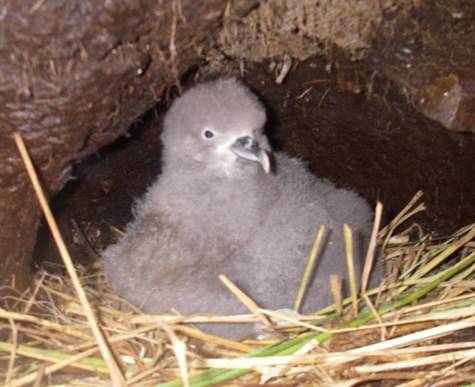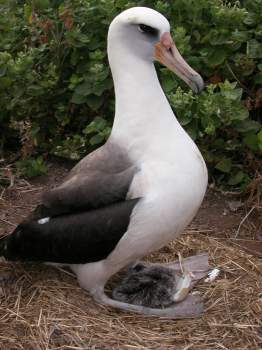Wildlife Rangers and ornithological field workers Marcus Salton and Kim Kliska on Australia’s Macquarie Island report that Near Threatened and ACAP-listed Grey Petrels Procellaria cinerea are continuing to do well after the eradication of rabbits and rodents by the Macquarie Island Pest Eradication Project (MIPEP) in 2011.
“The hunt for grey petrels has continued since May. It has been a team effort searching areas used by grey petrels. The aim is to estimate the number of grey petrel breeding pairs on Macquarie Island. To do this we have been carefully scouring patches of thick tussock looking and sniffing for signs of grey petrels. When we find something promising we take a closer look, either sticking our head right into the burrow or using a go-pro on a selfie-stick that is linked to a screen/tablet.
To date the team has recorded 94 breeding pairs: not quite a record, but we are getting close. So far our number of breeding pairs is greater than all the totals recorded prior to the Macquarie Island Pest Eradication Project (MIPEP). This suggests the breeding population has increased since MIPEP – great news! Now that there are no more rabbits on the island the vegetation is growing and providing much more stable habitat for grey petrels and other burrowing seabirds. There are still more than 10 out of 35 areas to search for grey petrels. Fingers crossed we are able to find more breeding pairs than were recorded in 2011 (112 breeding pairs), because this would mean the population is continuing to grow.” (click here).

Grey Petrel chick on Macquarie Island
Read earlier ACAP Latest News reports on Macca’s recovering Grey Petrels here.
Reference:
Schultz, M., Robinson, S. & Gales, R.[P.] 2006. Breeding of the Grey Petrel (Procellaria cinerea) on Macquarie Island: population size and nesting habitat. Emu 105: 323-329.
John Cooper, ACAP Information Officer, 22 July 2016

 English
English  Français
Français  Español
Español 


